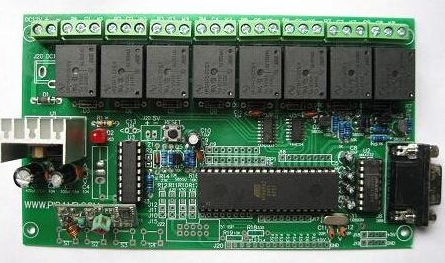General technical requirements, stretch the net: use red glue + aluminum tape method, in the aluminum frame and glue bonding, a layer of protective paint must be evenly scraped. At the same time, in order to ensure sufficient tension and good flatness of the screen, it is recommended that the stainless steel plate be kept 25mm-50mm away from the inner side of the screen frame.
1, stretch the net
Using the red glue + aluminum tape method, a layer of protective paint must be evenly scraped on the joint between the aluminum frame and the glue. At the same time, in order to ensure sufficient tension and good flatness of the screen, it is recommended that the stainless steel plate be kept 25mm-50mm away from the inner side of the screen frame.
2, screen frame
The frame size is determined according to the requirements of the printing machine. Taking DEK265 and MPM UP 3000 models as examples, the frame size is 29ˊ 29ˊ, aluminum alloy is used, and the frame profile specification is 1.5ˊ 1.5ˊ.
3, reference point
According to the size and shape provided by the PCB data, the opening is 1:1, and semi-transparent is engraved on the reverse side of the printing. At the corresponding coordinates, the entire PCB should have at least two reference points.

4. Opening requirements
(1) The position and size ensure high opening accuracy, and the opening is strictly in accordance with the prescribed opening method.
(2) The size of the independent opening should not be too large, and the width should not be larger than 2mm. A 0.4mm bridge should be built in the middle of the pad size larger than 2mm to avoid affecting the strength of the stencil.
(3) The opening area must be centered.
5, characters
In order to facilitate production, it is recommended to engrave the following characters in the lower left or right corner of the screen: Model; T; Date; the name of the screen production company.
6, the thickness of the screen
In order to ensure the printing volume of solder paste and welding quality, the surface of the screen is smooth and uniform, and the thickness is uniform. Refer to the above table for the thickness of the screen. The thickness of the screen should meet the finest pitch QFP BGA.
If there are 0.5mm QFP and CHIP 0402 components on the PCB, the thickness of the stencil is 0.12mm; if there are 0.5mm QFP and CHIP 0603 components on the PCB, the thickness of the stencil is 0.15mm;
Second steel mesh opening shape and size requirements
1. General principles
According to the requirements of the IPC-7525 stencil design guide, in order to ensure that the solder paste can be smoothly released from the stencil openings to the PCB pads, the opening of the stencil mainly depends on three factors:
1) Area ratio / aspect ratio area ratio> 0.66
2) The mesh wall is smooth. Especially for QFP and CSP with a spacing of less than 0.5mm, the supplier is required to perform electro-polishing during the production process.
3.) With the printing surface as the upper side, the opening under the mesh should be 0.01mm or 0.02mm wider than the upper opening, that is, the opening is in an inverted cone shape to facilitate the ineffective release of solder paste and reduce the number of times of cleaning the screen.
Under normal circumstances, the size and shape of the screen opening of the SMT component is the same as that of the pad, and the opening is 1:1.
Under special circumstances, some special SMT components have special regulations on the size and shape of the screen opening.
2, special SMT component screen opening
CHIP components:
CHIP components above 0603 are to effectively prevent the generation of tin beads.
SOT89 components: due to larger pads and components
The pad pitch is small, which is prone to soldering quality problems such as solder balls.
SOT252 component: Because SOT252 has a large pad, it is easy to produce tin beads, and the reflow soldering tension causes displacement.
A. For the standard pad design, PITCH "=0.65mm IC, the opening width is 90% of the pad width, and the length remains unchanged.
B. For the standard pad design, IC with PITCH<=005mm, because its PITCH is small, it is easy to cause bridging, the length of the stencil opening method is unchanged, the opening width is 0.5PITCH, and the opening width is 0.25mm.
Other situations:
When a pad is too large, usually larger than 4mm on one side and no smaller than 2.5mm on the other side, in order to prevent the generation of tin beads and the displacement caused by tension, the mesh opening is recommended to be divided by grid lines. The width of the grid lines is 0.5mm, the grid size is 2mm, and it can be divided equally according to the size of the pad.
Printing rubber screen opening shape and size requirements:
For simple PCB assembly, glue technology is adopted, and glue is preferred. CHIP, MELF, SOT components are printed on the screen, and IC is used as much as possible to avoid screen scraping. Here, only the recommended opening size and shape of the CHIP, MELF, and SOT printed rubber screens are given.
1. Two diagonal positioning holes must be opened at the diagonal corners of the screen. Select the FIDUCIAL MARK point to open the holes.
2, the openings are all long strips.
Three inspection method
Steel mesh detection method
1) Visually check that the opening is centered and the stretched net is flat.
2) Check the correctness of the screen opening through the PCB entity.
3) Use a graduated high-power microscope to examine the length and width of the opening of the mesh plate and the smoothness of the hole wall and the surface of the steel sheet.
4) The thickness of the steel sheet is verified by detecting the thickness of the solder paste after tin printing, that is, the result is verified.